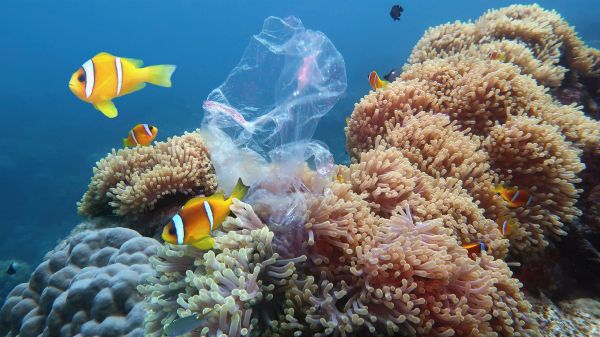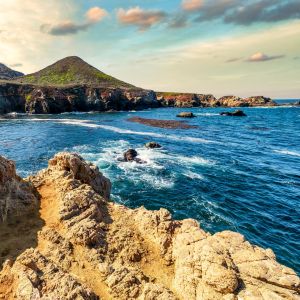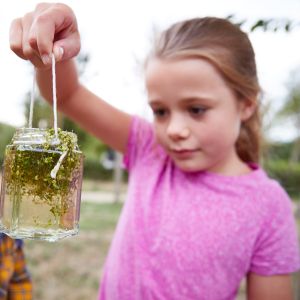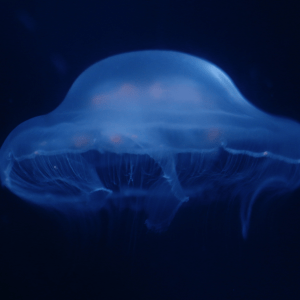Water Quality & Marine Education

Educating people about the importance of fresh water and marine ecosystems is a great way to involve local communities, educators, and students in addressing environmental issues at local, regional, and global scales. Use the resources below to educate people about marine debris, use real-time data to study El Nino, sea level rise, coral bleaching, water quality and ocean acidification, or go on virtual field trips to our nation's National Marine Sanctuaries. Water is everywhere and it touches all of us every day in many ways. Use these resources about water to bring your environmental education programs to life and make them relevant to everyone!
What’s great about this catalog is that users can select and bundle resources together to customize the content they need. Even better, there are so many different resource types—slides, worksheets, videos, simulations—for ages 4–18!
Guidelines: Depth, Instructional soundness, Usability
The lessons and activities are incredibly well thought-out and include everything from using LEGO to build float models to learning about the water cycle and ocean acidification.
Guidelines: Emphasis on skills building, Instructional soundness, Usability
Some of my favorite and most impactful lessons over the years have come from The Bridge. They are written by experts in both science and education and I can’t imagine my teaching without this resource!
Guidelines: Instructional soundness, Usability
I love this organization and the work they do. They build advocacy and leadership through environmental issues, especially water quality.
Guidelines: Action orientation, Emphasis on skills building
I love this site because it was built specifically for educators. Its database includes a range of STEAM activities, videos, images, etc. Educators create a free account and can save everything in folders that work for them to find later.
Guidelines: Instructional soundness, Usability
FathomNet succeeds in making the deep sea accessible to all via the internet, but also leverages community science to make discoveries on a grand scale. Users can view photos and videos from deep sea dives in a variety of locations to help train algorithms to identify species and objects on remotely operated vehicles miles below the sea surface. FathomNet is part of the Monterey Bay Aquarium Research Institute, where they conduct research on the ocean’s processes and inhabitants. This exciting new resource is accessible to many types of courses and individuals. The open-source nature of it promotes inclusive and equitable science. Incorporation into an independent, discovery-based science classroom is most appropriate.
Guidelines: Fairness and accuracy
Whether taking an actual fieldtrip or a virtual one, the Watershed Sleuth Challenge is a great way to prepare learners for visiting a wetland. Learners earn badges, Watershed Sleuth (blue), Watershed Guardian (green), and Watershed Hero as they complete this engaging three-part course.
Guidelines: Action orientation, Depth, Usability
NOAA has an incredible collection of educational resources from across the agency. These resources span a wide breadth of ocean, coast, freshwater, climate, and atmospheric science. They are developed by scientists and educators, use scientific data, encourage stewardship and environmental action, and utilize new educational techniques. This collection brings the very best of what NOAA has to offer into one organized website.
Guidelines: Action orientation, Depth, Emphasis on skills building, Fairness and accuracy, Instructional soundness, Usability
Data in the Classroom (DITC) is an incredible way to start teaching with scientific data from NOAA. DITC breaks data down into its fundamental components and starts by answering basic questions like what are x and y axes? And what is a false colored map? Once students become more comfortable with what data is, they are taught how to find, use, and interpret data, finally concluding with a research project they design themselves. DITC is flexible and can be used in whole or in part, depending on what works best for your students.
Guidelines: Depth, Emphasis on skills building, Fairness and accuracy, Instructional soundness, Usability
These 3D videos fully immerse the viewer with what it’s like to be underwater in a National Marine Sanctuary. Having the opportunity to watch protected animals swim just past your eyes is an incredible experience, especially since most people will never visit these locations in person. These dives can be experienced on a virtual reality headset for the most intimate experience and are also available for desktop computers and mobile devices.
Guidelines: Depth
Ocean Today’s short videos are fun and engaging for students. Designed for a middle school audience, but appropriate for older and younger students as well, these videos cover topics from safety at the surface to the creatures at the deepest parts of the ocean. These videos will inspire students to learn more about the ocean and to learn ways they can protect it.
Guidelines: Action orientation, Depth, Fairness and accuracy















